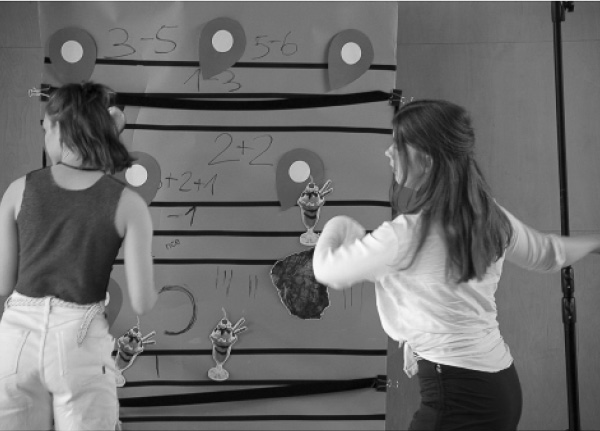
KOORDINAT, SUBSTITUTION, ETC
first performed on July 9, 2017
Siobhan Davies Studios, London, UK
performed once in 2017
KATHARINA JOY BOOK / STEPHANIE JOHNSTON
Andrew Johnston
Berlin, Germany / London, UK
563966611k563966611a563966611t563966611h563966611a563966611r563966611i563966611n563966611a563966611.563966611b563966611o563966611o563966611k563966611@563966611h563966611o563966611t563966611m563966611a563966611i563966611l563966611.563966611d563966611e
newhive.com/katharinajoy/it-me
KOORDINAT, SUBSTITUTION, ETC
KATHARINA JOY BOOK / STEPHANIE JOHNSTON
“koordinat, substitution, etc” was part of an explorative project about the choreographic qualities of transcription, translation, and scores, which saw different versions performed throughout 2016 and 2017. For this iteration, we were looking at methodologies of research into the potential relationships between text and gesture, notation and narrative.
As part of the Next Choreography Festival 2017, we presented multiple layers of action using different mediums—live action and works on paper. In this work we were “live scoring” text, which meant assigning gestures and imagery to certain words or concepts within a predetermined set of rules and trying to implement these while listening to the text. This “live scoring” also included taking note of our spontaneous responses. Through this action, we dealt with states of simultaneity, concentration, and listening, and with processes of sense-making made visible.
The text we scored was “Where Are We Eating? and What Are We Eating?” by John Cage, chosen for the sweet triviality of its subject matter, and for the elements of repetition and location. Our main space was a colorama backdrop, with lines of black string attached to evoke staves or ruled paper, with graphic paper cut-outs that were reminiscent of stickers in their generic nature. Google search results showing, for example, steak, ice cream, and location symbols were used to make a map of the text on the colorama. Apart from these stickers, we also used an oversized red pencil, individual black vinyl letters, and a bunch of fake yellow flowers—the latter, for example, symbolizing the notion of friendship. We started the performance together by establishing our language system. At the beginning, we chose movements for one of us to perform to illustrate the words of the text; these words, as well as the gestures, were chosen live, on the spur of the moment; the other performer moved through the task of scoring the text on the colorama. We performed in parallel to each other, our responses to the text intersecting and overlapping.
The process of communication between us, explicit in the beginning part of the performance as a series of chance intersections as it progressed, was a big part of this for us. It was the idea of watching two people navigate something together: what could it look like to perform the task of poetry?